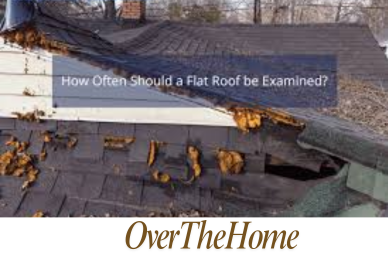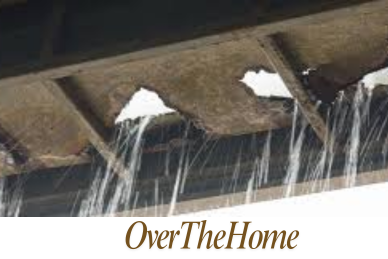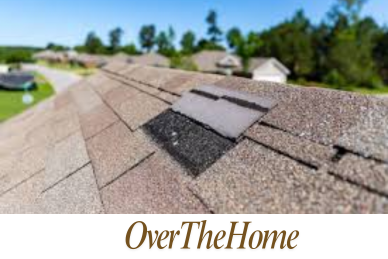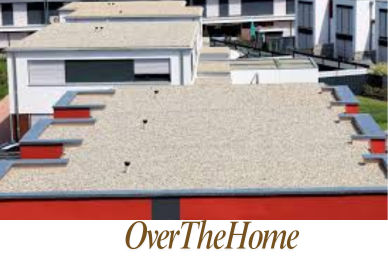Chimney Flashing Leaks: Everything You Need to Know
Chimney flashing is a crucial component of your home’s roofing system, yet it often goes unnoticed until problems arise. This strip of metal plays a vital role in protecting your home from water damage by creating a watertight seal where the chimney meets the roof. When chimney flashing fails, it can lead to costly repairs and potential structural damage.
In this article, we’ll explain everything you need to know about chimney flashing leaks and how to detect and fix them. Let’s begin.
What’s Chimney Flashing and Why You Should Maintain It
Chimney flashing consists of two main components: step flashing and counter flashing. Step flashing is L-shaped metal pieces that are woven into the shingles and run up the side of the chimney. Counter flashing is installed over the step flashing and is embedded into the chimney’s masonry. Together, these elements create a flexible, waterproof barrier that allows for the natural expansion and contraction of your roof and chimney.
The importance of proper chimney flashing cannot be overstated. A well-installed flashing system can protect your home from water infiltration for decades, while poor installation or neglect can lead to significant problems in just a few years.
What Are the Signs of a Chimney Flashing Leak
Detecting a chimney flashing leak early can save you thousands of dollars in repairs. Here are the key signs to watch for:
- Water stains on walls or ceilings near the chimney
- Peeling paint or wallpaper in the vicinity of the chimney
- Visible mold growth on walls, ceilings, or in the attic
- Musty odors in your home, particularly after rain
- Damp or wet marks around the chimney base in the attic
- Damaged or curling shingles near the chimney
- Visible cracks, gaps, or rust on the flashing itself
- Unexplained drips or water sounds during heavy rain
- Increased energy bills due to compromised insulation
- Efflorescence (white, powdery deposits) on the chimney’s exterior
If you notice any of these signs, it’s crucial to investigate further and address the issue promptly.
What Causes Chimney Flashing Leaks
Understanding the root causes of chimney flashing leaks can help you prevent them or identify the source of an existing problem. Poor workmanship during initial installation is a leading cause of flashing failures. This can include using the wrong type of flashing material, incorrect sizing, or improper sealing techniques.
Another common culprit is age and weathering. Even the best flashing materials degrade over time due to constant exposure to the elements. Most flashing has a lifespan of 20-30 years, depending on the material and climate.
Extreme weather can further increase the aging process, especially if your chimney flashing is built of low-quality material.
How to Diagnose a Chimney Flashing Leak
If you suspect a chimney flashing leak, it’s essential to pinpoint the source accurately. Start with a visual inspection from the ground, looking for obvious signs of damage or wear. Next, check your attic for water stains or dampness around the chimney area. If possible, inspect the roof closely during dry weather, looking for gaps, cracks, or loose flashing.
For a more thorough assessment, consider using a garden hose to simulate rain and observe where water might be entering. However, this method should be used cautiously to avoid causing additional water damage.
Professional inspectors may use specialized tools like moisture meters or infrared cameras to detect hidden moisture or temperature differences that indicate a leak. These advanced techniques can be particularly useful for identifying leaks that aren’t immediately visible.
How to Fix Your Chimney Flashing Leak by Yourself
In some cases, you may need to apply a temporary fix to prevent further damage until a professional can perform a proper repair. Here are two methods that can buy you some time:
- Applying waterproof sealant
For small cracks or gaps, a high-quality roofing sealant can provide temporary protection. Clean the area thoroughly, ensure it’s dry, and apply the sealant according to the manufacturer’s instructions.
This fix can last several months but should not be considered a permanent solution.
- Using a tarp
In emergency situations, such as during a storm, a heavy-duty tarp can be used to cover the chimney area. Secure the tarp carefully to avoid causing additional damage to your roof. This should only be used as a very short-term solution until proper repairs can be made.
Remember, these are stopgap measures. It’s crucial to have a professional address the underlying issue as soon as possible.
How to Get Your Chimney Flashing Leak Fixed Professionally
For lasting protection against chimney flashing leaks, professional repairs or replacement are usually necessary. The exact solution will depend on the extent of the damage and the overall condition of your roof and chimney. Common repair options include:
- Resealing
For minor issues, a professional may be able to reseal the existing flashing using high-quality roofing cement or urethane caulk.
- Partial replacement
If only certain sections of the flashing are damaged, a partial replacement may be possible.
- Complete flashing replacement
In cases of extensive damage or aging flashing, a complete replacement is often the best long-term solution.
- Chimney cricket installation
For chimneys wider than 24 inches, installing a chimney cricket (a peaked structure that diverts water around the chimney) can provide additional protection against leaks.
The cost of professional chimney flashing repair or replacement can vary widely depending on the scope of work, materials used, and your location. On average, you can expect to pay between $300 and $1,500 for professional chimney flashing repairs. A complete replacement might cost anywhere from $750 to $3,000 or more for larger or more complex chimneys.
How to Prevent Future Chimney Leaks
Prevention is always better (and cheaper) than cure when it comes to chimney flashing leaks. Have your chimney and flashing professionally inspected every year, ideally before the rainy season.
Regular chimney cleaning not only improves its function but also allows for early detection of potential flashing issues. Keep your roof in good condition by replacing damaged shingles and cleaning gutters regularly.
Don’t wait for small problems to become big ones. If you notice any signs of wear or damage, have them addressed quickly. Good attic ventilation helps regulate temperature and moisture levels, reducing stress on your roofing system.
Frequently Asked Questions About Chimney Flashing Leaks
What is the best sealant for chimney flashing?
For temporary repairs or small gaps, a high-quality silicone or polyurethane roofing sealant is often recommended. Products like Geocel 2300 or NP1 are popular among professionals. However, sealants should not be considered a long-term solution for significant flashing issues.
Can water get under flashing?
Yes, water can get under flashing if it’s damaged, improperly installed, or has deteriorated over time. This is why regular inspections are crucial – to catch and address any issues before water infiltration becomes severe.
Why is lead used for chimney flashing?
Lead is often used for chimney flashing because of its durability and malleability. It can be easily shaped to fit complex roof contours and chimney shapes. Lead also has a long lifespan (50+ years) and is highly resistant to corrosion. However, due to environmental concerns, many builders are now opting for alternative materials like copper or synthetic lead substitutes.
Can we use Dr. Fixit for roof leakage?
Dr. Fixit and similar waterproofing compounds can be used for minor roof leaks, including some chimney flashing issues. However, these products are typically best suited for temporary repairs or small-scale waterproofing. For significant chimney flashing leaks, it’s advisable to consult a professional for a more comprehensive repair or replacement.
Final Words
Chimney flashing leaks can be a serious threat to your home’s integrity, but with proper knowledge and care, you can protect your property from water damage. Regular inspections, prompt repairs, and preventive maintenance are key to ensuring your chimney flashing continues to do its job effectively for years to come. If you’re unsure about the condition of your chimney flashing or have noticed any signs of a potential leak, don’t hesitate to consult with a professional. The small investment in maintenance and timely repairs can save you from costly damage in the long run and keep your home safe and dry.






